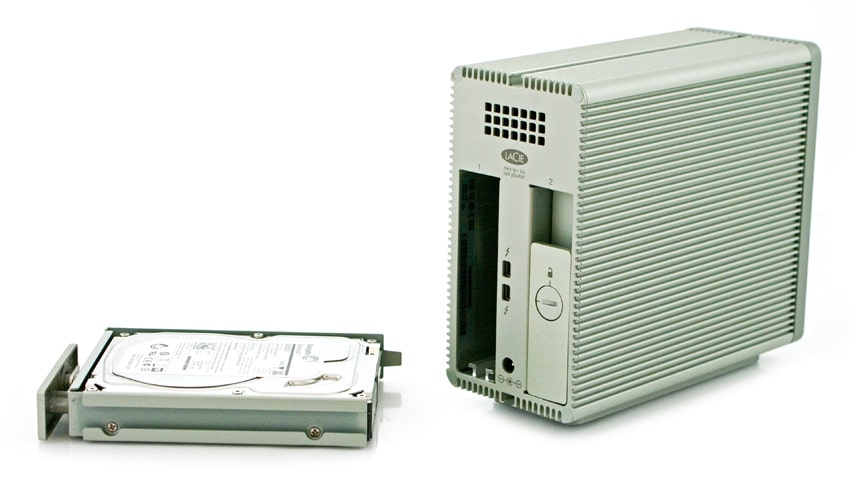Raid System Macbook Pro
I think you may need to take a little time to become more familiar with backup and restore procedures and design.
I backup all my laptops to external drives using a backup utility that automatically runs as soon as the backup drive is connected. I think this is what you should be doing for the situation you have described and forget RAIDs.
Kensington Thunderbolt 3 Docking Station SD5300t. $248.63 at Amazon. Kensington has a. 1 day ago Shoppers looking for an easy power delivery system for USB-C compatible Macs and iPads can pick up the Aukey 60W USB-C charger with GaN technology for only $14.29 with coupon at Amazon. Four DIMM memory modules (left) and two solid-state drives (right) The teardown reveals that in the 32GB base model, there are four 8GB DIMM modules, a configuration type that appears to be.
Sep 1, 2010 7:57 PM
macOS cannot be installed on a RAID. However, it can be transferred from a drive with a working copy. You will need a third drive on which to install macOS. Boot the computer from this drive. Create the RAID. Now, copy the boot drive to the RAID.
My advice, do not use a RAID for a startup disk.
RAID Basics
For basic definitions and discussion of what a RAID is and the different types of RAIDs see RAIDs. Additional discussions plus advantages and disadvantages of RAIDs and different RAID arrays see:

RAID Tutorial;
RAID Array and Server: Hardware and Service Comparison.
Hardware or Software RAID?
RAID Hardware Vs RAID Software - What is your best option?RAID is a method of combining multiple disk drives into a single entity in order to improve the overall performance and reliability of your system. The different options for combining the disks are referred to as RAID levels. There are several different levels of RAID available depending on the needs of your system. One of the options available to you is whether you should use a Hardware RAID solution or a Software RAID solution.
RAID Hardware is always a disk controller to which you can cable up the disk drives. RAID Software is a set of kernel modules coupled together with management utilities that implement RAID in Software and require no additional hardware.

Pros and conSoftware RAID is more flexible than Hardware RAID. Software RAID is also considerably less expensive. On the other hand, a Software RAID system requires more CPU cycles and power to run well than a comparable Hardware RAID System. Also, because Software RAID operates on a partition by partition basis where a number of individual disk partitions are grouped together as opposed to Hardware RAID systems which generally group together entire disk drives, Software RAID tends to be slightly more complicated to run. This is because it has more available configurations and options. An added benefit to the slightly more expensive Hardware RAID solution is that many Hardware RAID systems incorporate features that are specialized for optimizing the performance of your system.
For more detailed information on the differences between Software RAID and Hardware RAID, you may want to read: Hardware RAID vs. Software RAID: Which Implementation is Best for my Application?
Do You Really Need a RAID?
There are only two things a RAID provides - more drive speed or more space. Beyond that a RAID can’t help you with:
- Accidental deletion or user error
- Viruses or malware
- Theft or catastrophic damage
- Data corruption due to other failed hardware or power loss
- Striped RAIDs have a higher failure risk than a single drive
The purpose of a RAID is to provide high-speed mass storage for specialized needs like video editing, working with extremely large files, and storing huge amounts of data.
If your array fails it means complete loss of data and hours of time to rebuild. RAIDs degrade over time necessitating many hours of restoration. And, if you don't know much about RAIDs then you really don't need one.
You can use a RAID for backup. But unless your backup needs involve TBs of data requiring rapid and frequent access, why bother? TM works in the background. It's not like you have to sit there waiting for your backup to be completed. Furthermore, you're buying two drives possibly to solve a problem where a single drive will do. And, one drive is less expensive than two.
Ignoring overhead, two drives in a RAID 0 (striped) array should perform about twice as fast. However, as the array fills up with files that performance will degrade.
RAID was a technology that in its time was meant to solve a problem. Large capacity, fast drives were extremely expensive. Small drives were cheaper but slower. However, combining these cheaper drives into arrays gave the faster performance and the larger capacity needed for data storage needs. Thus, the reason why it's called Redundant Array of Inexpensive Drives. But today you can buy a 3 TB drive with a performance that's better than the 1 TB drives of two or three years ago.
Testing: RAID 0 In A MacBook Pro Using The Data Doubler.
But why trust your boot drive to a RAID? I certainly wouldn't.